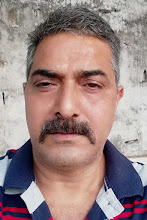The Kullu valley in
Himachal Pradesh is famous for its scenic beauty as much as it is known for its
temples and folk traditions. The valley is said to be the abode of gods and
goddesses. The people of Kullu consider the deities not only as gods but also
their teacher, councilor, doctor and friend, with a solution to all their
problems.
Kullu has been mentioned
as Kulantapeetha in the Ramayana and the Mahabharata, as well as in Vishnupurana,
Markandayapurana and Brihat Samihata. One of the earliest references in 5th
century BC has been found in Pananini’s work known as Ashtadhyayai, where Kullu
has been called Kulanta. The place also finds mention in Banabhatta’s kadambini
written in 7th century BC; Vishakadatta’s play Mudra Rakahas and
Kalhana’s Rajatrangini.
The Kullu valey offers a
variety in stone and wood carvings in the architecture of its temples, about
1000 of which are still standing there since millenniums and centuries. These
temples are of four types, the Shikhara, Pagoda, Mandapa and Flat- roofed.
 |
Visheshwara Mahadev at Bajaura
Photo Credit-flickriver.com |
Visheshwara Mahadev at Bajaura
The most popular temple in
the region, which is also the earliest in entire Himachal Pradesh is that of
Visheshwara Mahadev at Bajaura and is built around 1st century AD.
It is situated at the right bank of Beas river and is about 15 Km from Kullu
town while proceeding to Mandi.
 |
A Miniature stone Shiva Temple in Jagatsukh, 6 KM South of Manali along the road to Naggar
Photo Credit- Wikimedia Commons by Amitdighe |
Shiva and Sandhaya Devi temples at Jagatsukh
The miniature temple built
around 9th century AD at Jagatsukh village is also dedicated to Lord
Shiva and is also a monument of national importance. Another famous temple at
Jagarsukh is that of Sandhaya Devi.
Naggar the former capital
of the erstwhile state of Kullu has several temples. Nagger could be approaches
either from Patlikuhl or from Manali.
There is a gauri Shankar temple in Shikhars
style and the Ashiva temple. The Ashiva
and the Shiva temple at Dakshal village have been taken up by the
Archaeological Survey of India.
The Shikhara style of
architecture is a typical characteristic of north Indian plains and was
probably introduced into the hills around 2nd century AD. Like the
temples in the plains these temples are richly carved and are without any
pillared hall attached to the structure.
 |
Hidimba Termple
Photo Credit- Wikimedia Commons by Biswarup Ganguly |
Hidimba Devi Temple at Manali
The Pagoda style temple of
Hidimba Devi is about 1200 meters from the main Manali bazzar. This mysterious
temple is dedicated to the demon goddess Hadimba, also called Hirma Devi. The
man eating demon Hadimba of Mahabharata times that Bheema had married on the
condition that she would give up her evil deeds is worshipped as a goddess here
and is in fact the presiding deity of the entire Kullu valley. Even today her
position is next to Raghunathji, and her presence is must during the famous
raht yatra or the chariot procession held at the beginning or end of the international
Dussehra fair.
The temple of Hadimba Devi
was rebuilt by Rajah Bahadur Singh of Kullu in 1553 AD. It is a square
structure with three roofs of narrow wodden planks one over other. A large cone
shaped roof tapers off on the top.
There are exquisite wood carvings at the
entrance and on the pillars. On the right at the base of the frame of the door
are shown Mahishasurmardini and a devotee with folded hands and seated on Nandi
bull are the Lord Shiva and his consort the goddess Parvati. On the left of the
door is goddess Durga, a devotee and Lord Vishnu and Luxmi seated on Garuda.
 |
Prashar Temple
Photo Credit- Wikimedia Commons by Dr Satendra |
Prashar Temple
About 50 Km South- East of
Kullu town is the temple of the sage known as Prashar Rishi. On the other hand
about 20 Km North- West of Kullu at Dayar is the temple of Triyugi Narayan,
which has been built in 15th century AD.
The valley has various
attractions to offer which range from fairs, festivals and scenic beauty to
ornamental dresses and handicrafts. But the main attraction still remains with
the historic temples with their architectural fineness.













